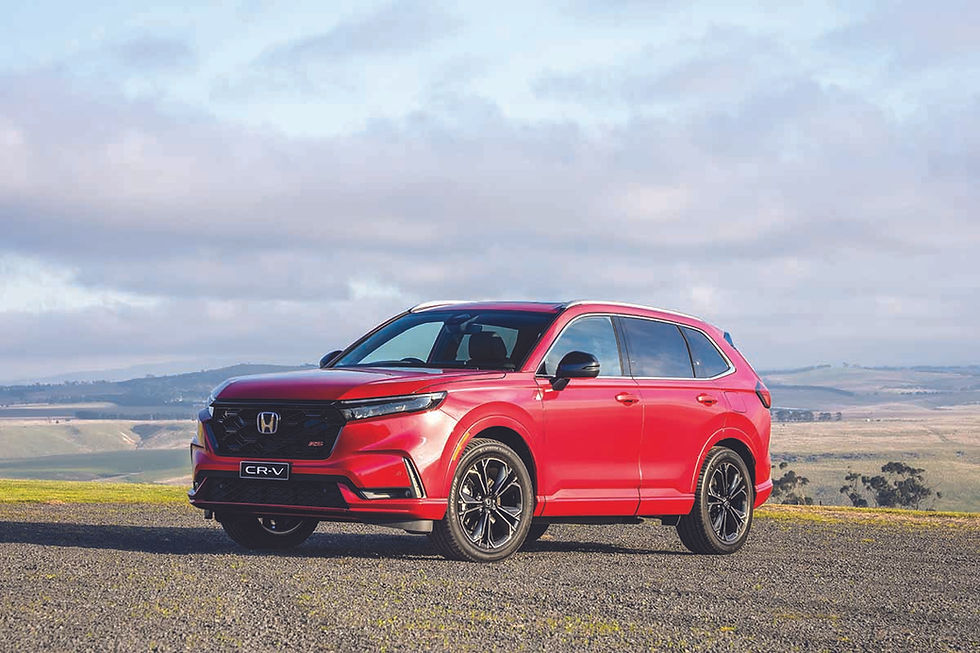High voltage hybrids electrify driving
- Gary Worrall
- Sep 18
- 2 min read

HYBRID and EVs are back in the news, with renewed calls for road user charges to make up for the downturn in fuel excise, governments are concerned about lost revenue.
With thanks to Honda, here is a quick rundown on hybrid drive:
Hybrid vehicles combine an internal combustion engine or ICE (Petrol or Diesel) with an electric motor to improve fuel economy and reduce emissions, the most common systems in the market are:
FHEV – Full Hybrid Electric Vehicle – The engine and electric motors work together or independently, charging the electric battery through regenerative braking and engine power, it can drive as electric only for a limited distance. FHEVs do not require plugging in and are ready to drive at any time, reducing fuel consumption by up to 40% compared to an equivalent petrol-only model.
PHEV – Plug in Hybrid Electric Vehicle – a PHEV predominantly drives like an EV, with roughly 40-80km range. Under certain conditions the engine drives the wheels and maintains battery charge but won’t increase the battery charge, recharging requires the car to be plugged into a charging port. After the battery is depleted, the engine takes over and drives the wheels.
MHEV – Mild Hybrid Electric Vehicle – The engine drives the wheels directly, the small electric motor is designed to assist the engine, boosting torque and improving fuel economy, fuel savings are minor compared to an FHEV.
REX / REEV – Range Extended Electric Hybrid Vehicle – Drives like an EV, the engine does not drive the wheels, it generates electricity to charge the battery only, the electric motor drives the wheels, fuel economy can be similar or more than a FHEV.
Honda’s Intelligent Hybrid Drive has three modes, EV, Hybrid and Engine drives, with EV also including regenerative braking.
In EV Drive, during start up, acceleration and city driving, the vehicle runs on its motor alone, powered by electricity from the battery. Since the engine is off, the vehicle drives like a BEV (Battery electric vehicle) without using petrol.
Hybrid Drive – The vehicle drives on the motors alone using electricity generated by the engine, Electricity from the battery is also used to realise powerful acceleration.
Engine Drive – During high-speed cruising, which requires less driving force, engine drive mode is more efficient than running the electric motor at high speed. Engine output is direct to the wheels to reduce power loss.
EV mode / Regenerative braking – When decelerating or driving downhill, the kinetic energy from the wheels turning is converted to electricity to charge the battery.




Comments